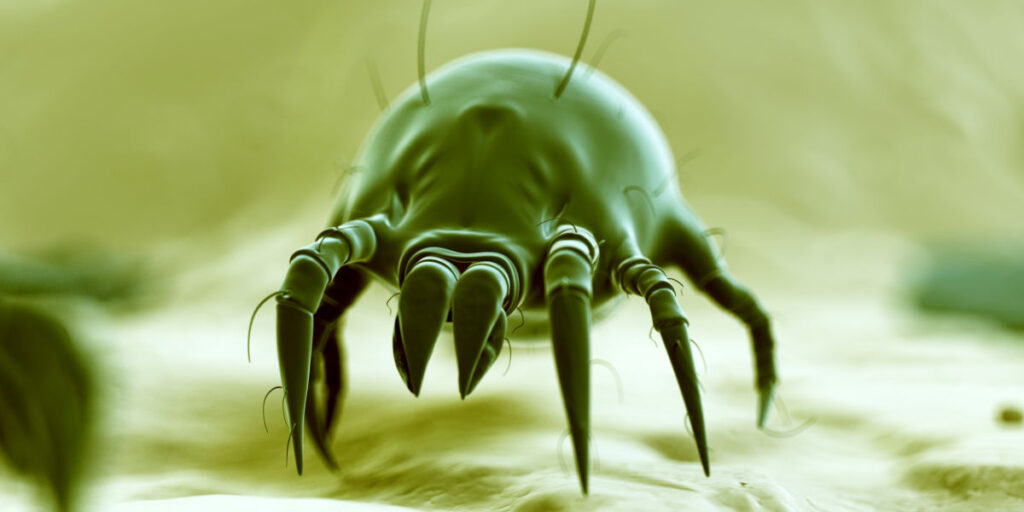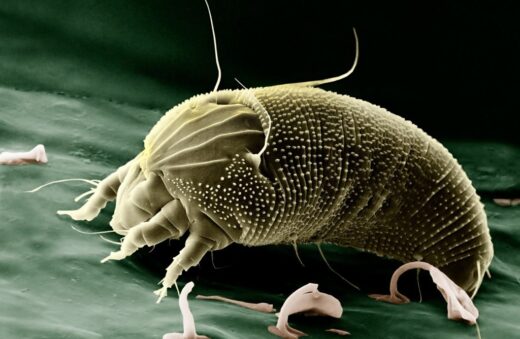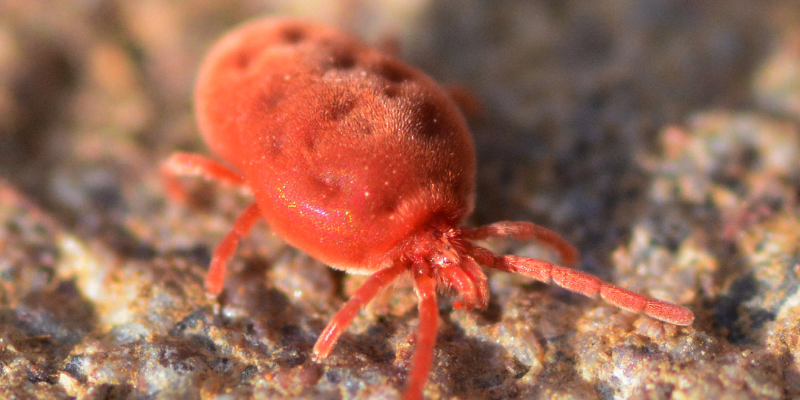
Having problems with mites?
The majority of mite species are harmless to humans, but a few species of mites can colonize humans directly, act as vectors for disease transmission, or cause or contribute to allergenic diseases.
Professional Mite Control Services in the UK
Mites are tiny arthropods that can cause significant discomfort and health concerns despite their small size. Some mites, like dust mites, trigger allergic reactions, while others—such as scabies or bird mites—cause skin irritation or infest homes. At Shire Pest Solutions, we provide targeted and professional mite control services across the UK to help you maintain a safe, hygienic, and pest-free environment.
Types of Mite Infestations
- Scabies Mites: Sarcoptes scabiei burrow into human skin, causing intense itching and rashes.
- Dust Mites: Common in mattresses and upholstery; known triggers for hay fever, asthma, and eczema.
- Bird Mites: Often enter homes after birds like pigeons vacate nests near eaves or solar panels.
- Clover Mites: Enter through tiny crevices, usually in autumn, and gather around windows in large numbers.
- Red Spider Mites: Plant feeders that leave pale mottling and webs on houseplants and greenhouse crops.
Where Are Mites Commonly Found?
- Mattresses, bedding, and upholstered furniture
- Air vents, carpets, and curtains in humid areas
- Bird nests, particularly on rooftops and solar panel frames
- Cracks in window frames, skirting boards, and shelving
- On pets or through contaminated clothing and second-hand goods
Why Do Mite Infestations Occur?
Mites thrive in warm, humid environments and can multiply quickly if left untreated. Poor ventilation, unclean bedding, untreated bird nests, and damp storage conditions all create ideal breeding grounds. Some mites are introduced via infested pets, furniture, plants, or even dust in the air.
Are Mites Dangerous?
While not all mites are harmful, many can lead to significant discomfort or trigger allergic reactions. Scabies mites, for example, burrow into the skin, while bird mites and chiggers can bite and cause severe itching. Dust mites don’t bite but are a major cause of respiratory conditions like asthma and allergic rhinitis.
Diseases and Skin Conditions Caused by Mites
- Scabies: Highly contagious skin infestation caused by Sarcoptes scabiei.
- Zoonotic Scabies: Contracted through contact with animals like cats, dogs, or wildlife.
- Rickettsialpox: Bacterial infection transmitted by mites found on mice.
- Scrub Typhus: Spread by chigger mites in some regions; causes fever, rash, and in serious cases, organ failure.
How to Prevent and Control Mites
- Clean bedding weekly using a hot wash cycle
- Vacuum carpets, furniture, and mattresses regularly
- Use allergen-proof pillow and mattress covers
- Keep humidity below 50% using dehumidifiers
- Remove bird nests and pigeon-proof rooftops and solar panels
- Treat affected textiles with mite-killing insecticides
Professional Help for Severe Infestations
Severe or persistent mite problems often require professional intervention. At Shire Pest Solutions, our trained technicians identify the type of mite, the extent of the infestation, and provide effective, targeted treatments. Whether you’re dealing with bird mites in your loft, dust mites in your bedding, or red spider mites on your plants, we have the tools and expertise to resolve the issue swiftly and safely.
Do Mites Carry Diseases?
Mites do not typically carry as many infectious diseases as ticks, but they can still pose health risks. Some spread bacterial infections like rickettsialpox or cause conditions like scabies and dermatitis. Others, like dust mites, contribute to long-term health issues through allergic sensitisation. Identifying and treating the source of the infestation is key to preventing ongoing discomfort and damage to your health and home.



Mite Control FAQ
More About Shire Pest Solutions
Shire Pest Solutions is a trusted and local pest control company proudly serving homes and businesses across Oxfordshire and beyond. We have built our reputation on professionalism, reliability, and fast response times, specialising in the safe and effective removal of pests including ants, wasps, rodents, bed bugs, and more.
Our expert technicians hold full qualifications and use the latest tools and treatments to resolve pest problems quickly and safely—without unnecessary disruption. Whether you face a minor domestic issue or a large-scale commercial infestation, we design our services to meet your needs with minimal fuss and maximum effectiveness.
Based locally, we regularly assist customers in Didcot, Wallingford, Abingdon, Wantage, Witney, Newbury, Thame, Thatcham, and Stokenchurch. Our knowledge of the local area enables us to provide rapid call-outs and treatments that are suited to the unique pest challenges of each location.
At Shire Pest Solutions, we don’t just eliminate pests—we stop them from returning. We offer transparent pricing with no hidden fees, and we dedicate ourselves to customer satisfaction, making us the go-to pest control provider for homeowners, landlords, and commercial clients alike.
Contact us today to arrange a call-out or find out more about our pest control services across Oxfordshire and surrounding areas.
